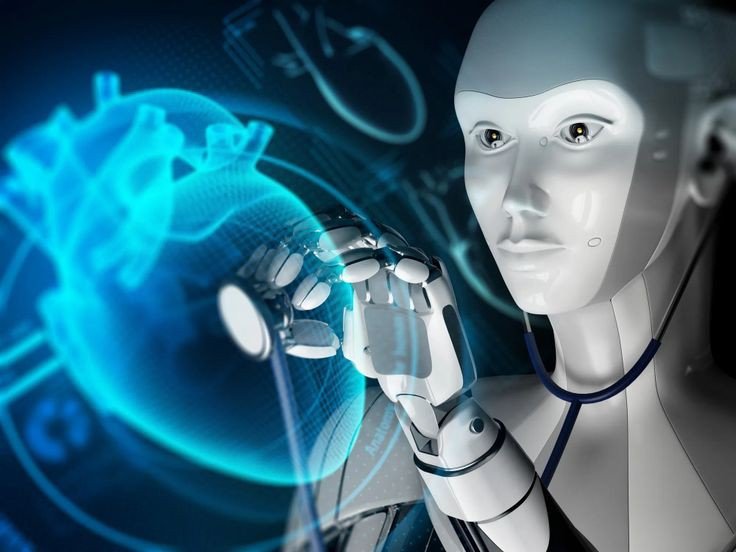
The integration of robotics in healthcare has transformed medical practices, particularly in the field of surgery. Surgical robots, with their precision, flexibility, and control, have revolutionized how surgeries are performed, enhancing the capabilities of surgeons and improving patient outcomes. This article delves into the role of surgical robots in healthcare, exploring their benefits, applications, key technologies, challenges, and future trends.
The Evolution of Surgical Robots
Surgical robots have evolved significantly since their inception. The development began with robotic systems that assisted in minimally invasive procedures, providing surgeons with enhanced dexterity and precision. Over the years, technological advancements have led to more sophisticated systems that can perform complex surgeries with high accuracy.
Key Milestones
1. The PUMA 560: One of the earliest surgical robots, used in the 1980s for neurosurgical biopsies.
2. The da Vinci Surgical System: Introduced in the 2000s, it became the most widely known surgical robot, used for a variety of procedures.
3. Mazor Robotics: Specialized in robotic systems for spine surgery, providing high precision in spinal procedures.
Benefits of Surgical Robots
Enhanced Precision and Control
Surgical robots provide surgeons with greater precision and control than traditional surgical methods. The robotic arms can make smaller, more precise movements, reducing the risk of human error.
Minimally Invasive Procedures
Robotic surgery often involves smaller incisions compared to traditional surgery. This minimally invasive approach leads to less pain, reduced scarring, and faster recovery times for patients.
Improved Visualization
Surgical robots are equipped with high-definition 3D cameras, providing surgeons with a detailed view of the surgical area. This improved visualization aids in more accurate and effective surgeries.
Reduced Fatigue
Surgeons can perform complex and lengthy procedures with less physical strain and fatigue, as they can operate the robotic system from a comfortable, seated position.
Enhanced Dexterity
Robotic instruments can rotate and maneuver in ways that human hands cannot, enabling surgeons to perform intricate procedures that would be difficult or impossible with conventional techniques.
Applications of Surgical Robots
General Surgery
Surgical robots are widely used in general surgery for procedures such as cholecystectomy (gallbladder removal), hernia repair, and colorectal surgery. The precision of robotic systems reduces complications and improves patient outcomes.
Cardiothoracic Surgery
In cardiothoracic surgery, robots assist in procedures like coronary artery bypass, heart valve repair, and lung resection. The minimally invasive approach reduces trauma and speeds up recovery.
Urology
Robotic-assisted surgeries are prevalent in urology, particularly for prostatectomies, kidney surgeries, and bladder reconstructions. The precision of robots is crucial in delicate procedures involving the urinary tract.
Gynecology
In gynecology, surgical robots are used for hysterectomies, myomectomies, and endometriosis treatment. The minimally invasive nature of robotic surgery results in less postoperative pain and faster recovery.
Orthopedic Surgery
Robotic systems in orthopedic surgery assist in joint replacements, spine surgeries, and fracture repairs. These systems enhance accuracy in bone cutting and implant placement, improving patient outcomes.
Key Technologies in Surgical Robots
Robotic Arms
Robotic arms are the primary tools of surgical robots. They mimic the movements of the surgeon’s hands with greater precision and stability. These arms can hold and manipulate surgical instruments, perform suturing, and carry out other delicate tasks.
High-Definition 3D Cameras
Surgical robots are equipped with high-definition 3D cameras that provide a magnified view of the surgical site. This enhanced visualization helps surgeons perform complex procedures with greater accuracy.
Haptic Feedback
Some advanced surgical robots incorporate haptic feedback technology, allowing surgeons to feel the tissues they are working on. This sensory feedback improves the surgeon’s ability to perform precise and controlled movements.
Artificial Intelligence and Machine Learning
AI and machine learning are increasingly being integrated into surgical robots. These technologies can analyze data, predict outcomes, and assist in decision-making, enhancing the overall efficiency and effectiveness of surgical procedures.
Challenges and Considerations
High Costs
The cost of acquiring and maintaining surgical robots is significant. This expense can be a barrier for smaller healthcare facilities and may contribute to higher medical costs for patients.
Training and Expertise
Effective use of surgical robots requires specialized training and expertise. Surgeons must undergo extensive training to become proficient in robotic-assisted procedures, which can be time-consuming and costly.
Technical Limitations
Despite their advancements, surgical robots have limitations. They require precise calibration and maintenance, and any technical malfunction during surgery can pose serious risks.
Ethical and Legal Concerns
The increasing use of robotics in surgery raises ethical and legal questions, such as liability in case of surgical errors and the potential for reduced human oversight. Clear regulations and guidelines are needed to address these concerns.
Future Trends in Surgical Robotics
Integration of AI and Big Data
The integration of AI and big data into surgical robots will continue to advance. AI algorithms can assist in preoperative planning, intraoperative guidance, and postoperative care, enhancing the overall surgical process.
Remote Surgery
The development of remote surgery, or telesurgery, will enable surgeons to perform procedures from distant locations. This technology can improve access to specialized surgical care, particularly in remote or underserved areas.
Personalized Surgery
Advancements in robotics and AI will pave the way for personalized surgery, where procedures are tailored to the specific needs and conditions of individual patients. This approach will improve surgical outcomes and patient satisfaction.
Enhanced Collaboration
Future surgical robots will facilitate better collaboration between human surgeons and robotic systems. This collaboration will enhance the capabilities of both, leading to more efficient and effective surgeries.
Conclusion
Surgical robots have transformed the field of surgery, offering unparalleled precision, control, and flexibility. As technology continues to advance, the role of robotics in healthcare will expand, bringing new possibilities for patient care and surgical innovation. However, addressing the challenges related to cost, training, and ethical considerations is crucial to ensure that the benefits of surgical robots are realized equitably and responsibly. The future of surgical robotics promises to be an exciting frontier in healthcare, with the potential to revolutionize how surgeries are performed and improve outcomes for patients worldwide.
ALSO READ: First ‘Robot Suicide’ in South Korea: What to Know









